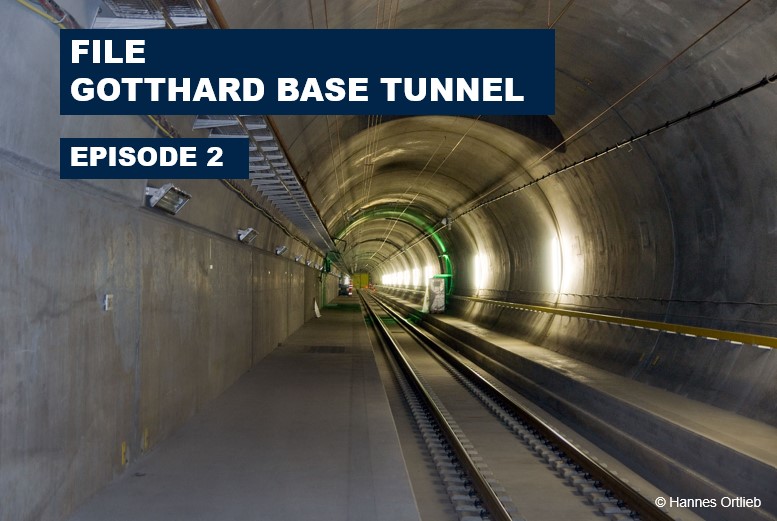On 10 August 2023, a freight train derailed in the Gotthard Base Tunnel. A few minutes before entering the tunnel through the south portal, the train was inspected by automatic wayside train monitoring systems (WTMSs). According to the monitoring data, the train travelled into the tunnel without problems.
Topics discussed:
- What are wayside train monitoring systems (WTMSs)?
- What are WTMSs capable of?
- What is the process for improving WTMSs?
- Digital automatic coupling (DAC) and the future
What are wayside train monitoring systems (WTMSs)?
Wayside train monitoring systems (WTMSs) are part of the railway infrastructure and are used at strategically favourable locations within the network. They use sensors and other technologies to inspect every single vehicle of the train as it passes through. The data acquired in this way are processed and used in daily railway operations to ensure safety, improve punctuality and reduce maintenance.
What are WTMSs capable of?
The original purpose was aimed at protecting the infrastructure to reduce disruptions and damage as well as increase the safety of rail operations.
• Detecting hot boxes
• Detecting wheel treads
• Inspecting pantographs
• Preventing fires and chemical incidents
• Measuring axle weight
• Protecting the structure gauge
• Detecting natural events
• And more
On the north-south axis and on the east-west axis, over 10,000 trains are dynamically monitored by over 250 WTMSs every day. A good 20 alarms are triggered each day, on average.
What is the process for improving WTMSs?
In the innovation project “Wayside Intelligence (WIN)”, which is supported with public funds from the Federal Office of Transport (BAV), SBB Infrastructure is working to further improve the monitoring structure. In addition to the sensor data, new image data are collected, and individual vehicles are identified with the help of radio frequency identification (RFID). The data are analysed algorithmically, aggregated and supplied to the users for specific applications via standardised data exchange interfaces. These advancements aim at improving maintenance by referencing the current condition of the vehicle. At the same time, they enable a simplification of the maintenance processes through artificial intelligence and automation. The project has already made significant progress and may lead to increased safety and availability for both the network and the vehicles.
DAC and the future
With the introduction of DAC (Digital Automatic Coupling), the vehicles lined up into trains are connected together by a data line. This means that the infrastructure provider has minute-by-minute information about which vehicles are travelling its network and in which train. Thanks to this train integrity, the data from the WTMSs can be made available more quickly and reliably. To learn more about DAC and the data ecosystem, read our blog post “Data ecosystems: Sharing data to double its added value”. The extent to which DAC might help to prevent train accidents such as the one in the Gotthard Base Tunnel is discussed by VAP rail freight expert Jürgen Maier in an interview with “10 vor 10”.



